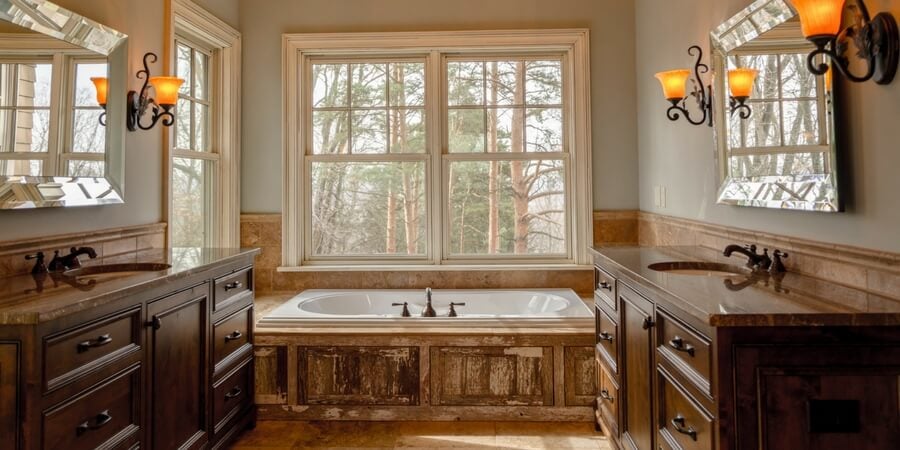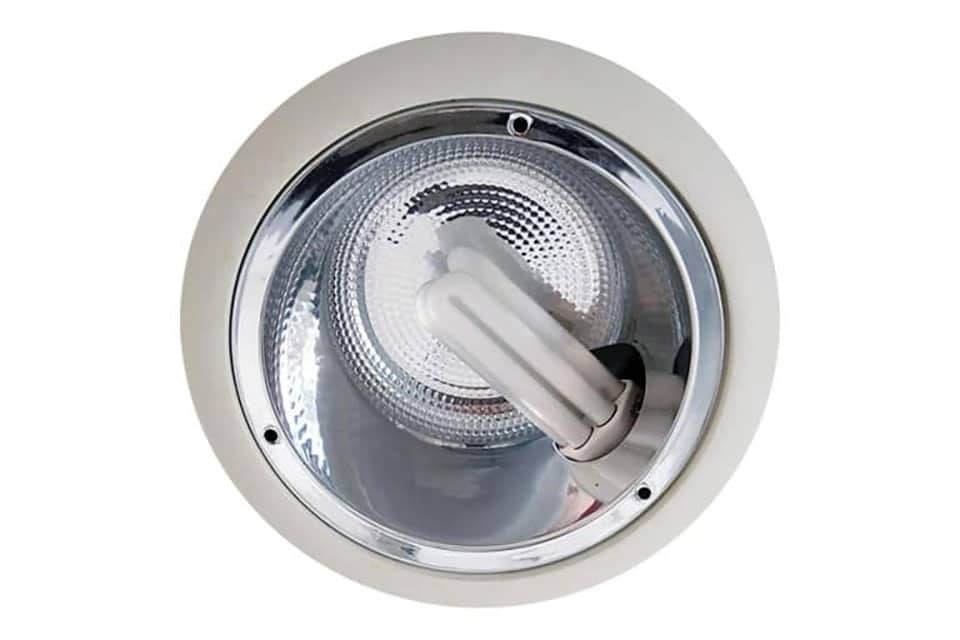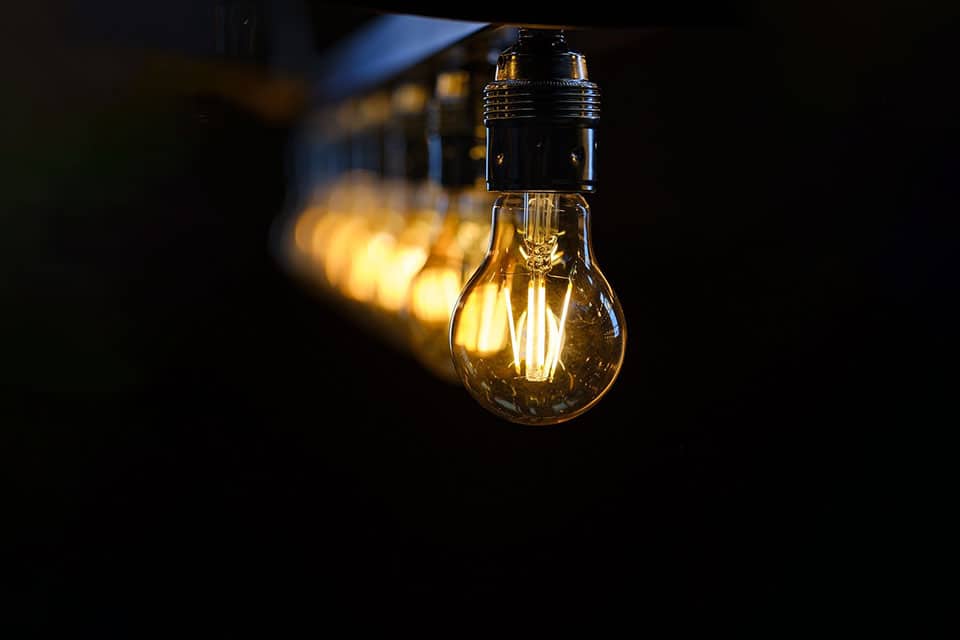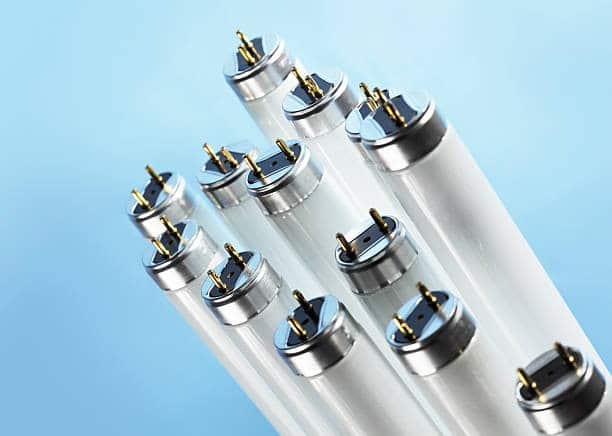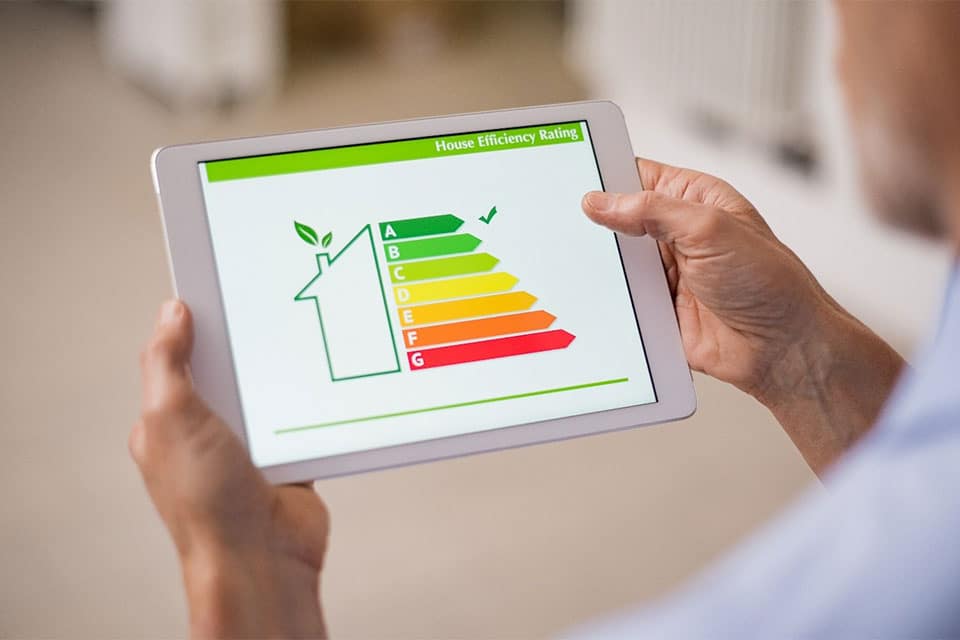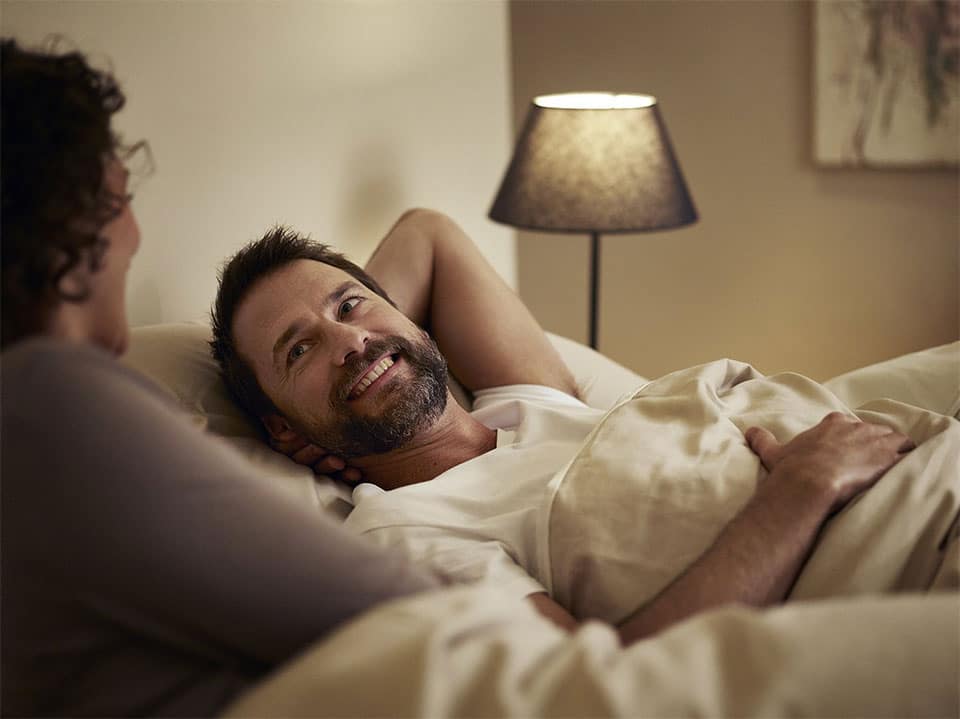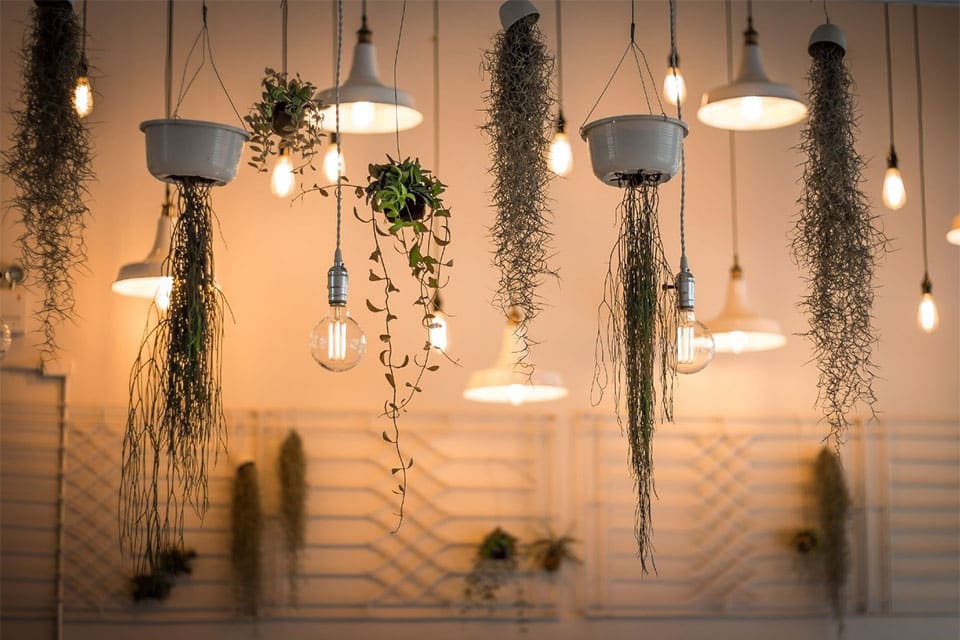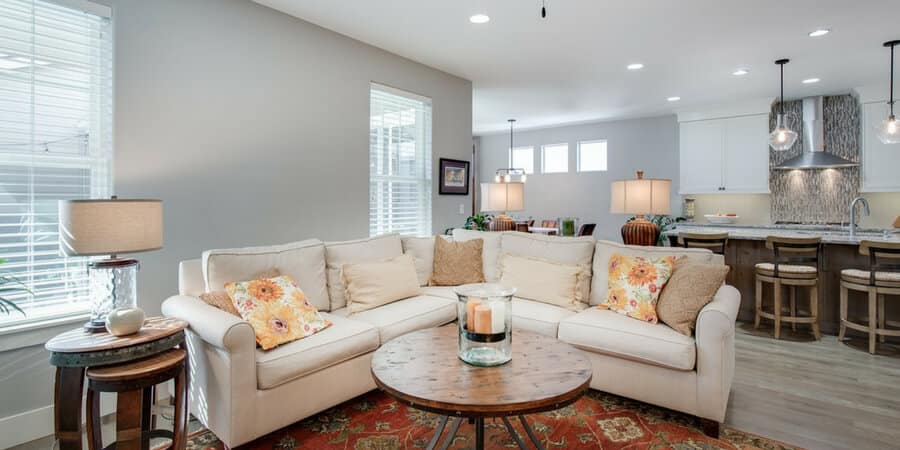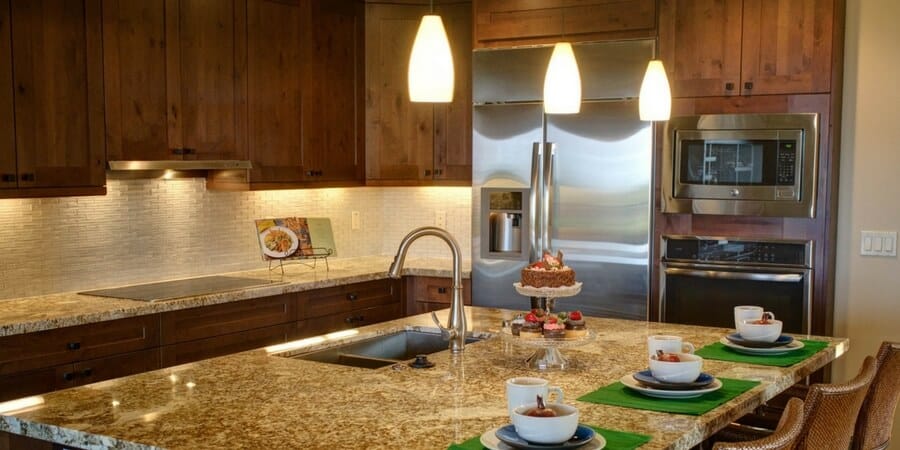Bathroom lighting is easy to overlook when you’re creating a plan for your home lighting design. It may seem like a good place to cut costs when upgrading your lamps, but bathroom lighting plays an important role in our daily routines. Whether you need bright light to help wake you up while you’re getting ready in the morning or something soft and relaxing to aid you unwind in the bath at the end of the day, a properly lit bathroom can make all the difference. Here are our tips for lighting your bathroom:
Lighting the Space
Bathrooms are typically smaller spaces with less room for fixtures, fewer outlets, and modest windows, as well as moisture to contend with. This means you have fewer options for illuminating the space, so the fixtures and bulbs you do select will often have to do double duty by acting as mixture of accent, task, and ambient lighting. Even with these limitations, it’s still easy to create the important layers of light every room needs.
Luminous Layers
If your home has multiple bathrooms, they’ll each have different considerations depending on the size of the room and how the space is used. For instance, some people may use their bathrooms for their full morning or evening routine, while others may simply want to shower or shave and finish getting ready at their bedroom mirror. Layer your light using these tips:
- Ambient Light: Also called general lighting, ambient lighting provides you with a uniform level of light, giving you enough visibility to move through the room safely. Typically it comes from an overhead source, such as chandeliers, pendant lamps, or recessed lighting, but sconces and other wall-mounted lights can be used as well.
- Task Lighting: Provides a brighter level of light so you can see better to perform tasks, such as shaving, putting on makeup, dental care, and other daily preparations. The best lamps for task lighting provide concentrated light that is directed exactly where you need it. In bathrooms, these fixtures generally include sconces and vanity lighting around the mirror.
- Accent Lighting: Use accent lighting to add depth and interest to your bathroom lighting design, highlight plants or decorative elements such as tile or artwork, and enhance the overall atmosphere. Fixtures such as directional recessed lamps, track lighting, and wall fixtures that can be angled and positioned will provide the most flexibility.
Areas to Illuminate
The number of light sources you use will depend on how much space you have available, but regardless of the size of your bathroom, there are some areas that should not be overlooked. Make sure you properly light up these parts of your bathroom:
- Mirror – After ambient lighting, the mirror is the most important area to illuminate in your bathroom. You need to see what you’re doing in the mirror to avoid accidental over-plucking or cutting yourself shaving, and on top of that, you want to start and end your day feeling good. For lighting that doesn’t cast unflattering shadows, avoid placing ceiling fixtures directly above and in front of the mirror. Instead, opt for light fixtures on either side of the mirror at eye level, or install a bar along the top that runs the full width of the mirror, which casts a more even light.
- Cabinets & Drawers – Cabinets and drawers need enough lighting for you to easily see and grab any item you might be looking for. Overhead lighting such as recessed lamps can work here, but remember that under cabinet lighting doesn’t have to be limited to the kitchen. To make them easier to sort through, place rope lights or LED strip lights under bathroom counters and cabinets, and inside drawers. Bonus: these lights can also help you navigate your bathroom safely and easily at night without making it impossible to get back to sleep.
- Tub or Shower – Whether you’re reading a book in a long, luxurious bath or shaving your legs in the shower, lighting around the tub area is important, especially if your bathroom is a larger space. General lighting may be sufficient in a small space, but recessed lighting is a good out-of-the-way option for larger bathrooms. When selecting lighting for the tub or shower area, remember to keep IP ratings in mind.
IP Ratings
In areas where lighting fixtures will come into contact with water (such as your bathroom), you’ll need to look at IP ratings. IP (ingress protection) ratings indicate the kind of environment a fixture can tolerate, including what level of moisture it can safely be exposed to. There are three different zones to keep in mind when selecting lamps and fixtures for your bathroom:
Zone | Areas Included | Minimum IP Rating |
|---|---|---|
| Zone 0 | The bathtub or floor of the shower. | IP67 |
| Zone 1 | Above the the bath or shower floor up to 2.25m. | IP44 |
| Zone 2 | 0.6m outside the bath or shower, including the space above it up to 2.25m. | IP44 |
| Everywhere else | The rest of the bathroom. | No IP rating required |
Speaking with a professional electrician or lighting designer can give you the best idea about what your bathroom requires.
Choosing Light Bulbs & Fixtures
After accounting for what’s possible given the location and safety rating necessary for your space, selecting light bulbs and fixtures largely comes down to personal preference. There are a few things you should keep in mind though:
- Colour Temperature & Lumen Level – In your bathroom, you will want a flattering light that is bright enough to act as task lighting. We recommend something with a warm colour temperature, around 2700k, and with a high lumen level, especially if you have or are going to install a dimmer switch. These bulbs will work well in your bathroom:
- Color Rendering Index (CRI) – Have you ever gotten ready in your home only to step outside, see yourself in natural light, and feel like you look completely different? That is the work of light bulb CRI. The higher the CRI of a light bulb, the more accurately colours are depicted. Because of this, it is a good idea to have light bulbs with a CRI rating above 80 around your bathroom mirror. These bulbs fit the bill:
- Light Bulb Type – With incandescents being phased out, you should be looking at LEDs. Shop our full selection of LED light bulbs.
- Fixtures – You can add texture and visual interest to your bathroom with the fixtures you select. So long as they are rated properly for the area you are adding them, don’t be afraid to add some drama with unusual fittings such as small chandeliers or pendant lamps if you have the space.
- Dimmers & Different Switches – Use dimmers or multi-step dimmer bulbs so you can adjust the lighting to suit your activity level and the time of day—there’s nothing better than being able to dim your lighting when you’re making a trip to the bathroom at midnight. Whenever possible, set it up so different lights are activated by different switches. This will give you a little more control over the ambience of the room.
Read the rest of our Room-by-Room Guide to Lighting your Home for more lighting tips and expert advice for lighting every space.





















































































